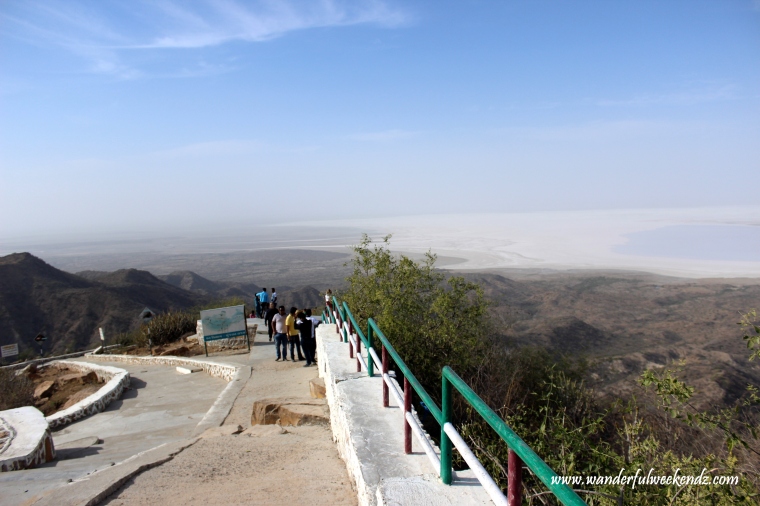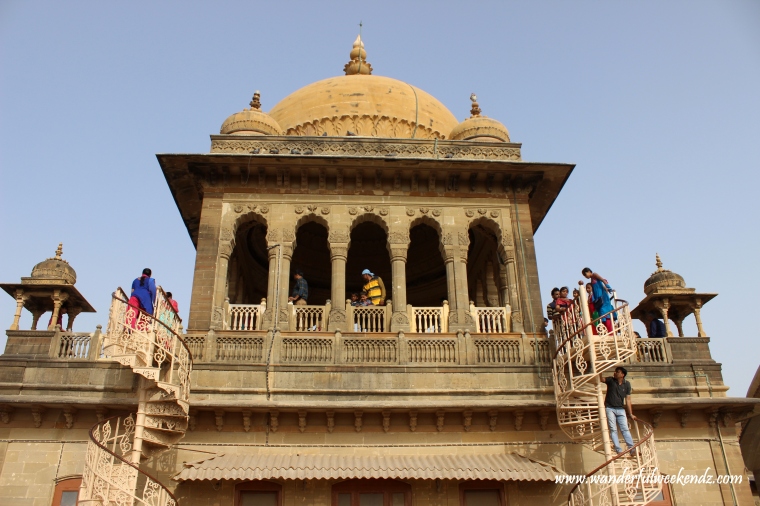One missed attempt and countless failed plans later, we finally made it to the Great Rann of Kutch; just before the tourist season ended in late March. Thanks to Big B’s vehement accounts of a colorful life in the starkly barren Rann of Kutch, we have had Kutch on our bucket list for some time now.
But visiting the Great Rann needs as much planning as providence. Firstly, being seasonal in nature, the salt desert only appears between the months of November and March. This happens when post monsoons, the water-logged Rann dries up leaving behind salt deposits extending for miles together all the way to India’s international border with Pakistan. Secondly, experts suggest that to experience the magic of the white desert, one must visit it on full moon nights when the salt takes on a luminescent silvery hue. That basically leaves one with only five or six suitable days in a year to visit the Great Rann of Kutch.
So was the Great Rann worth the hype and anticipation? I will let the pictures do the talking.




Though the Great Rann is bereft of colors, every aspect of the daily lives of the tribal communities inhabiting this barren landscape is touched by colors in one way or the other. From the names of places; the White Rann and the Kalo Dungar (the highest point in the Great Rann known for panoramic views of the White Desert, that literally translates to ‘Black Hill’); to the mesmerizingly beautiful handicrafts that the locals churn out.

Each community in this region has it’s own unique craft-form starting from intricate wood carvings; to metal items such as bells and penknives; to hand-woven shawls and mats; to tie and dye fabrics; to embroidered bags; wall hangings and home décor; to colorful appliqué and glass work. The list is endless and with support from the government as well as a number of non-government organizations, these crafts have got a fresh lease of life and have found patronage all over the world. Some art forms such as the Rogan Art of Nirona village and Kharad weaving of Kuran are so singular that they are practised by only one family in the whole region.



Hence, a visit to Great Rann will be incomplete without stopovers at the artist villages and soaking up in Kutch’s colourful heritage.
Getting there and around:
Bhuj (80kms) away is the closest airport and railway station to the Great Rann of Kutch. From Bhuj hire a vehicle to get to the White Desert road. The villages of Dhordo and Hodka are the most popular pit-stops for people visiting the Rann.
Being close to the border, entry into the Rann is strictly regulated by the Border Security Force. Both Indians as well as Foreigners must collect a written permit from the Bhirandiyara check post en-route.
Around the Great Rann:
Bhuj, the gateway to the Great Rann is not just a transit town. This capital of the erstwhile princely state of Kutch, has some interesting stopovers.

- Prag Mahal: Built in 1865, this Italian Gothic structure almost seems out of place in the middle of the dusty city of Bhuj; a chaotic jumble of flat roofed houses, temples with pointed spires and crooked streets. Most parts of the palace is in dire need of maintenance but it’s grand Durbar Hall with glass chandeliers and ornate walls is a sight to behold. Climb to the top of the palace’s bell tower for panoramic views of Bhuj city and Bhujia hill with the crumbling walls of the Bhujia Fort running along it’s flat top. On the walls of the palace, photos of the Maharaja and his bevy of luxury cars jostle for space with photos from the Bollywood epic Lagaan – some parts of which were shot here.

- Aaina Mahal: Situated adjacent to Prag Mahal, the Aaina Mahal (Palace of Mirrors) is decorated with resplendent chandeliers, fountains and doors inlaid with ivory and gold. It was built in 1761 by a protégé of Maharao Lakhpatji, who was sent to Holland especially to master the glasswork skills.
- Bhujodi: An artisans cooperative settlement situated 8km southwest of Bhuj. This is one place where one can find at least one representative of most of the handicrafts prepared in this region. In some shops you can see live demonstrations and buy products directly from the artisans.

Besides this, Bhuj is dotted with museums and temples, most noteworthy of which is the Swaminarayan Temple. Venture if time permits.

The sea side town of Mandvi situated 60 kms west of Bhuj is another popular stopover for those visiting the Great Rann. This summer retreat of the Maharaj of Kutch is now an equally popular retreat for tourists and locals. That particular weekend, Mandvi’s sandy beach had been completely over-run by bathers, picnicking families and men offering rides on colorfully decorated camels and horses. Towering high above this melee, a row of wind turbines all along the beach presented an curious contrast.


While in Mandvi, do visit the Vijay Vilas Palace (also belonging to the royal family of Kutch). Set in the middle of a sprawling estate containing gardens, orchards and now dysfunctional fountains, this relatively new royal residence exudes contemporary elegance.
Like Prag Mahal, here too the walls are plastered with photos of movies shot in the palace. So, if the domed terrace of Vijay Vilas reminds you of a certain Bollywood song that had Salman Khan and Aishwarya Rai romancing under the moonlight, you would probably not be too far from fact.



For last four centuries, Mandvi has also been an important center for ship-building and even today, the banks of river Rukmavati are lined with ship-building yards where craftsmen painstakingly assemble ships out of timber just like the old days.

Bhuj, Mandvi and the Great Rann can easily be covered in three days excluding the travel time from one’s city.
When to Visit:
The best time to visit Bhuj and the Great Rann is between November and March. The weather is pleasant though being an arid region, there is a huge variation between day time and night time temperatures even this time of the year.
From December to February, the Gujarat government holds a special festival called “Rann Utsav” to showcase the White Desert and the culture and handicrafts of Kutch. During this time, a special tent city is built in Dhordo village on the edge of the Great Rann with daily performances and handicraft stalls. The Rann Utsav attracts droves of visitors from India as well as abroad. Understandably, everything is more expensive during the Rann Utsav. So, if you want to avoid the crowd and also don’t want to overpay, plan to visit in November or March.
Where to Stay:
The people of Kutch have traditionally lived in thatched huts made of mud, locally known as Bunga. These huts are brightly painted and often decorated with glass both inside and outside. The mud keeps Bungas cool from inside during the day and when outside temperatures dip during the night, their interiors become warm subsequently. Several resorts on the periphery of the Great Rann such as Shaam-e-Sharhad Village Resort, Gateway to Rann and Toran Rann Resort offer accommodation in Bunga – an experience not to be missed.

From scenic beauty to culture to history to art, there is never a dull moment on a visit to vibrant Kutch. It’s beauty is to be experienced, not read.
Cautionary Note: Since this region is very arid, there is a lot of dust in the air and everywhere. So, in case you have a dust allergy or any other respiratory problem, please take the requisite precautions before travelling.
Cheers!
For more weekend wanderings, follow us on:


Wonderful photographs and very informative!
LikeLiked by 1 person
Thank you
LikeLike